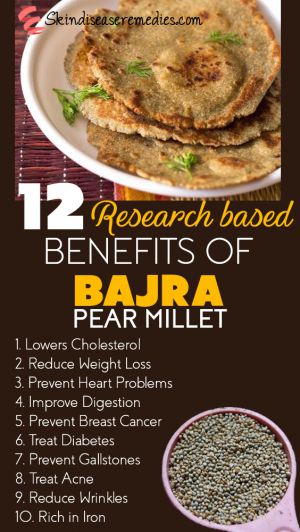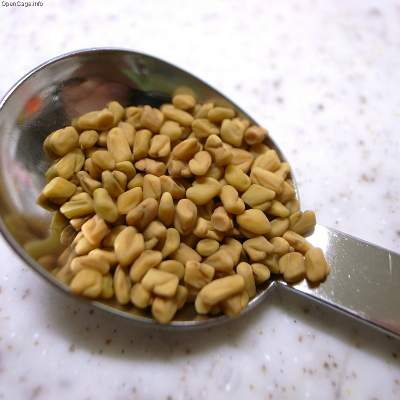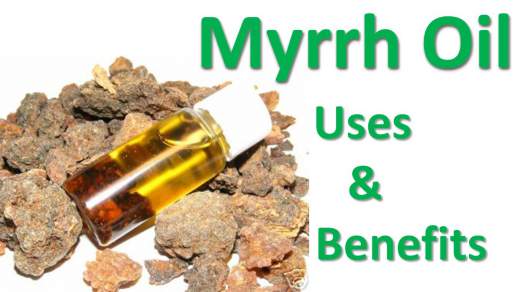
Also known as pearl millet, bajra is packed with calcium, iron, and B-vitamin. In this article, you’ll learn about benefits of bajra for health.
India stands as the largest producer of pearl millet. So many people here use this grain as a substitute for rice because it is known to protect you from diabetes.
After a long time when I visited my uncle’s home, like an average Indians they served me with lots of spicy dishes. But, surprisingly both my uncle and aunt instead of having this delicious food they started chewing bajra roti. Later, I came to that both uncle and aunt has diabetes.
This made me dwell into health benefits of pearl millet and these exceptional uses of bajra or kambu (Tamil) or pear millet (English) made me to replace my dinner with two bajra rotis. (Anyhow, I couldn’t stick to my plan).
Also read: Uses of Nutmeg
12 Benefits of Bajra for Health and Weight Loss
Pearl millet is not just an alternative grain. According to whfoods.com, it is qualified as one of the best sources of nutrients.
#1 Lowers Cholesterol
This natural ingredient is packed with heart protective properties that help to prevent cardiovascular issues.
Niacin residing in bajra plays a vital role in lowering cholesterol level in the blood. Magnesium and potassium in this grain help to regulate blood pressure. Other assorted phytonutrients in bajra lower the risk of heart attack.
Studies also show that magnesium can reduce the severity of asthma and migraine problem.
#2 Prevent Gallstones
A study carried by American Journal of Gastroenterology, ingesting fiber rich food can prevent gallstones in women.
A 16-year study with 69,000 women concludes that people who consumed insoluble fiber developed more protection towards gallstones.
Researchers think that insoluble fiber increase movement of food and decrease bile secretion that may result in gallstones. Abundant in pearl millet, insoluble fiber is found in nuts, fruits, vegetables, and beans.
#3 Bajra for Diabetes (Type-2)
The blood sugar level will be under check if you consume it regularly in breakfast. Also, the energy source helps to keep you full till the lunch time without hunger pangs.
Grains including pearl millet are packed with magnesium and minerals that act as co-factor for 300 enzymes involving glucose and insulin.
A study was carried out by Black Women’s Health for a period of 8 years involving 41,186 participants conclude that magnesium, calcium and other essential food sources are related to type-2 diabetes.
#4 Prevents Breast Cancer
Studies carried out concludes that regular intake of bajra can lower the risk of cancer because its consist cancer protecting agents.
Research concludes that women who ingested fiber experienced 52% lower risk of breast cancer compared to other women who consumed the least fiber.
#5 Improve Digestion
Fiber in bajra helps in easy digestion and prevents constipation. Not just this, regular intake can keep other digestive related problems at bay. Rich concentration of fiber in this grain helps to easy movement of food.
Packed with exceptional nutrients bajra intake can help to get rid of stomach issues.
#6 Free from Gluten
People with celiac disease may find bajra useful, as the wheat, we normally eat consists of gluten which can damage small intestine surface due to an immune reaction.
People with gluten sensitivity will find this grain alternative to wheat. Apart from this, it is non-allergic in nature.
#7 Improve Nervous System
Moderate vitamin B housed in this grain plays a crucial role in the healthy functioning of nervous system.
Phosphorus that is packed in bajra plays a vital role in the metabolism of fats and is an essential component in nucleic acids. It is very important in structuring every cell in the body.
#8 Rich Source of Iron
This grain is packed with iron, which aids in improving haemoglobin level in the blood and prevents anaemia.
Experts say that amino acids in bajra are easily digestible when compared to wheat grains. It’s packed with a bunch of energy boosters, which is a long-acting source of energy.
#9 Bajra for Weight Loss
You eat more when you feel hungry right? But, bajra intake will not make you feel hungry for a long time. Fiber and long lasting energy in this grain help to burn fat.
Tryptophan is an amino acid present in bajra that helps to lower appetite and makes you feel full. Rich content of fiber in pear millet prevent overeating and satiate hunger.
#10 Good for Skin and Hair
Minerals, proteins, and vitamins packed in bajra keep your children skin and hair healthy. It’s not accompanied by any serious allergic reaction.
- Antioxidant agents packed in bajra help to restrain free radicals and prevent fine lines.
- Amino acids present in pear millet help to promote collagen production and elastin to reduce wrinkles.
- Alium is an antioxidant housed in bajra that improve blood circulation in scar tissue. Thus, minimize scars.
- Selenium, vitamin E and C packed in pearl millet help to protect your skin from harmful UV rays. They also improve your skin complexion and it radiant.
- Lipoic, an antioxidant agent exhibit anti-inflammatory property that can effectively reduce acne inflammation.
Rich concentration of proteins and vitamins in this grain help to strengthen hair follicle, stimulate growth, and treat ailments like eczema and psoriasis.
Also read: Alum Powder for Canker Sores?
#11 Pear Millet for Childhood Asthma
International Study of Allergy and Asthma in Children conclude that regular consumption of fish and grains (pear millet) can reduce asthma by percent.
Researchers state that western diet lacks anti-inflammatory, omega-3 fats and vitamin E, which is provided by fish and grains. However, people who’re allergic to wheat must avoid ingesting them.
#12 Lignans Against Heart Issues
Plant Lignans found in millet are converted to mammalian Lignans, which can effectively protect you from cancers associated with heart and breast.
Apart from bajra, nuts, vegetables, fruits, and berries also include Lignans.
Nutrition Facts of Pear Millet
Bajra or millet is regarding as one of the best foods that can provide basic nutrients to your body.
With impressive starch levels, vitamin B, potassium, magnesium, zinc and essential fats, bajra seeds are excellent to improve your overall health. Exceptional amount of protein and fiber content make it perfect to treat ailments like diabetes, heart issues, and gall bladder.
B-complex vitamins like biotin, choline, folate and pantothenic acid are residing in pearl millet. Other vitamins like retinoids, carotenoids, vitamin C, beta-carotene, lycopene, lutein, vitamin D, vitamin K and vitamin E are also packed in it.
Minerals include selenium, phosphorus, sodium, iodine, copper, chromium, calcium, boron, zinc and fluoride are residing in bajra.
Apart from this, fatty acids like omega-3&6 fatty acids, linolenic acid, oleic acid and saturated fatty acids are also available in this grain.
Description and History
Bajra has been consumed by our ancestors for many years, because of its renowned health benefits. Here, in India you can find different recipes of bajra, I normally prefer the traditional roti made by my mother.
Though we classify it as grain, technically pearl millet is seed. Often related to bird food, pearl millet is something more than that.
Tiny in size, bajra or pearl millet can be found in white, yellow and deep red. However, I personally prefer yellow and white millet.
Asian countries are among those who widely consume pearl millet. Before potatoes and corn, pearl millet was treated as a staple food in Europe. It was introduced into the US in the 19th century.
India, China, and Nigeria stand among the top producers of bajra.
My mom brings bajra seeds and grinds them, which has excellent aroma and taste. Not sure about store bought grains. Benefits of bajra are not just confined health, but its regular intake can enhance healthy skin and hair.



